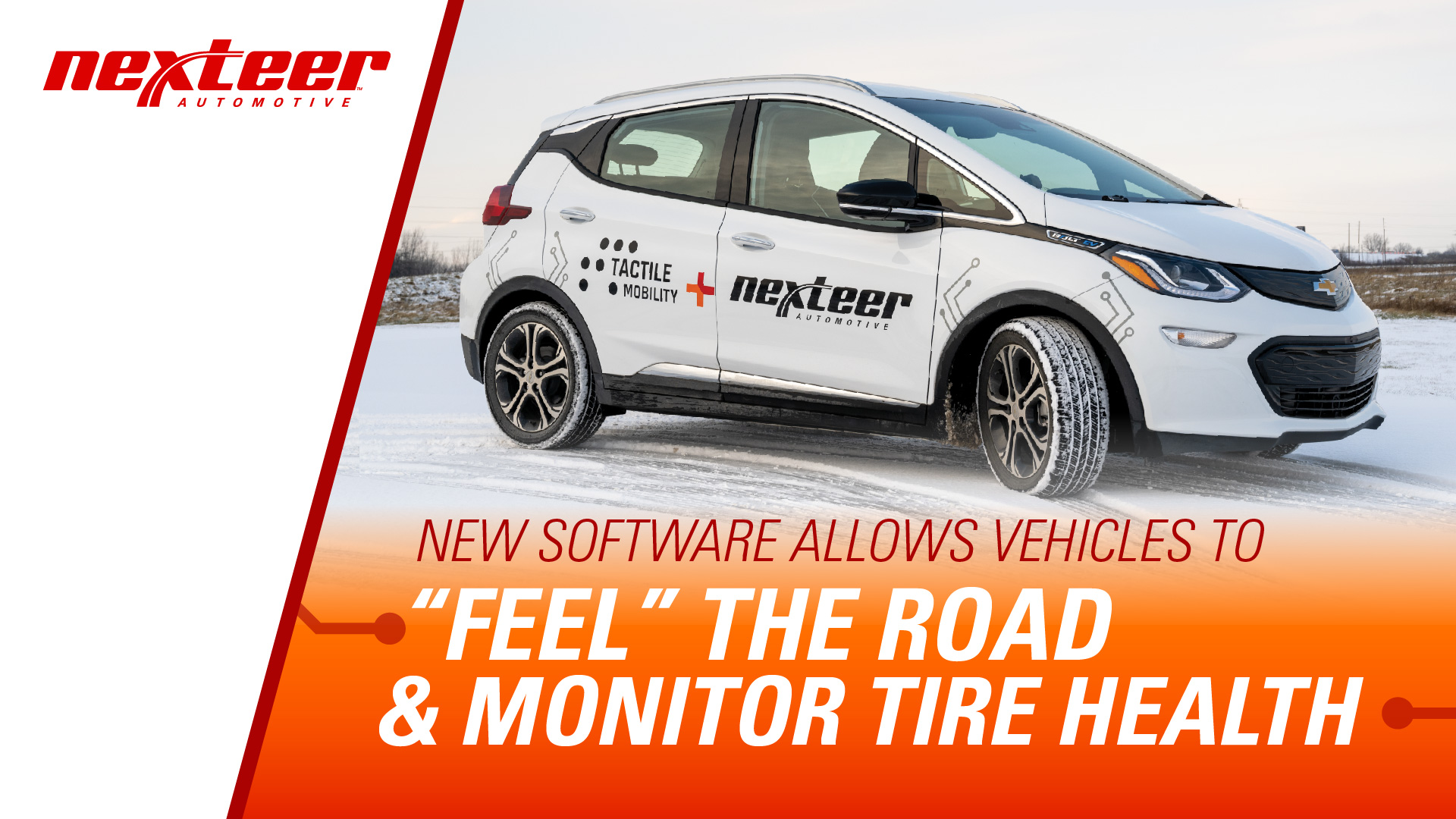Innovation - New Mobility - Safety - Software
Collaboration with Tactile Mobility Allows Vehicles to Feel the Road
March 14, 2022

Automotive technology continues to shift toward a driver experience that is more passenger-centric and less driver-centric. As technology and, eventually, culture changes surrounding these updates, safety, performance and convenience will have to keep up. Here at Nexteer, our goal is to develop intuitive motion control technology with this forward-thinking mindset, and our partnership with Tactile Mobility, a leading tactile virtual sensing technology and data provider, is helping to keep us ahead of our goals.
Through this partnership, we recently developed an advanced road and tire detection software, which enhances the connection among the driver, vehicle and road through a new, advanced road and tire detection software in a steering system. The solution creates opportunities to improve overall vehicle health management and safety by detecting changing road surfaces such as wet, dry and icy, as well as tire conditions such as stiffness and tread depth.
A Deeper Connection for Vehicles to “Feel” the Road
The new software can detect road surface conditions and friction in all speeds and road conditions, starting from parked and going as fast as highway speeds. Tactile Mobility’s virtual sensors and algorithms integrate into Nexteer’s electric power steering (EPS) system and corresponding EPS software. It combines physical modeling and machine learning to generate virtual, hardware-free sensors. The software can reside in existing vehicles’ electronic control units and is not influenced by visual interruptions such as fog, heavy rain or field of view.
Today’s EPS systems already use software tuned for the “feel of the road” to give drivers road feedback through the steering wheel. Our new software takes this a step further by also enabling the vehicle itself to feel the road by converting road surface information into data that the vehicle uses to adjust to conditions.
Through advanced road and tire detection software, we are helping usher in an autonomous future as vehicles develop in their ability to sense the world around them. Self-driving vehicles will need to detect changes in their environments and adjust accordingly based on road feedback and constantly changing conditions.
Tested Technology for Safety-Critical Feedback
By ensuring safety-critical feedback through the vehicle’s ability to “feel,” we’re increasing levels of safety and redundancy across all levels of autonomous driving. Vehicles will be able to adjust to the safest and most efficient settings based on conditions, taking human guesswork out of the equation and eventually leading to infinitely safer driving experiences.
The technology has been tested extensively and will continue to develop. Through our years of data collection as separate companies and through our partnership, our system has employed machine learning and identified patterns in road surface and tire detection data from more than 20 million miles of driving. The machine learning continues, adding to the software’s ability to relay conditions over time.
Connectivity for Safer Future Transportation
Along with recognizing and translating data patterns, the software can share road surface data with other vehicles in real-time, enabling more vehicles to be aware of the environment and improving safety and traffic flow. Connectivity is another major aspect of an autonomous future – information will be transmitted among cars and infrastructure, telling individual vehicles what obstacles lie ahead and adding layers of redundancy and safety in case internal vehicle systems fail.
As our work continues, we’re looking beyond global automotive OEMs and into adjacent sectors such as automotive insurance carriers to help support safer driving as well as municipalities in streamlining road maintenance and winterization efforts. The drive to future transportation affects all of us and will have far-reaching implications in many different industries.
Our collaboration with Tactile Mobility began in January 2021 with a focus on motion control to enable software offerings that maximize over-the-air updates and connectivity for safer, more reliable driving.
Partnerships like these enable collaboration that will keep us moving toward an autonomous and connected future. Together, we aim to make strides and keep moving toward future mobility, looking for opportunities to collaborate along the way.





